Collotype Magnification
Image Structure
Collotypes are most easily characterized by their grain, which appears as a fine, worm-like pattern. This happens during processing of the dichromated gelatin coated plate. After exposure, the plate is washed in cold water to remove the dichromate chemicals, which also causes the gelatin to swell, buckle and reticulate forming a fine, irregular pattern. The fineness of the grain pattern can vary and depends on several factors, most notably on the thickness of the gelatin emulsion.
Because the collotype is a planographic process, ink in the image will be level with the surface of the paper. This is best seen under magnification with raking light. Additionally, a true plate mark will not be present. False plate marks may be applied to the paper and can be identified under magnification.
What to look for: Fine, worm-like structure of the image (this will be most obvious in the midtones); ink level with paper surface; lack of true plate mark.
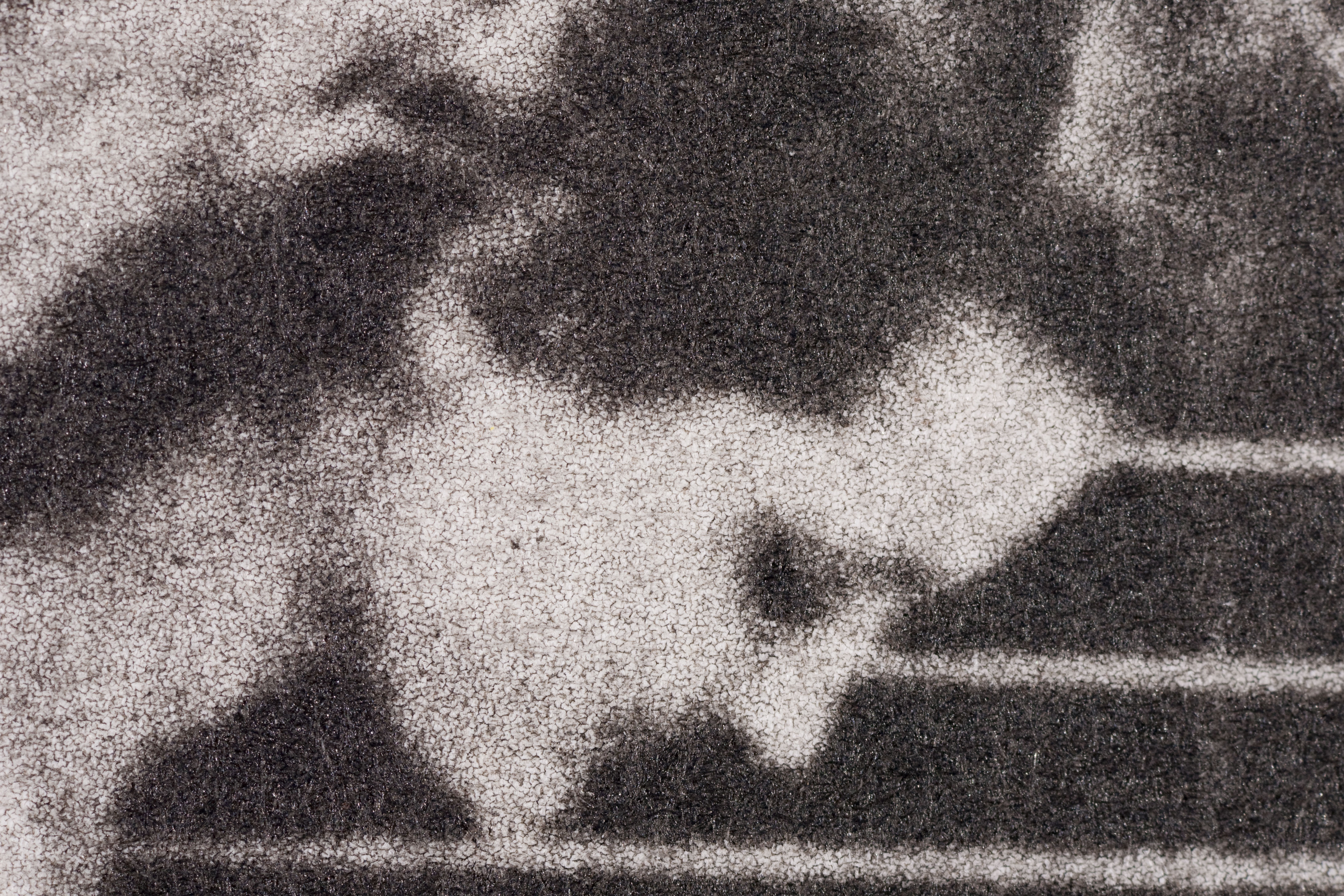
Reticulation at 10x magnification.
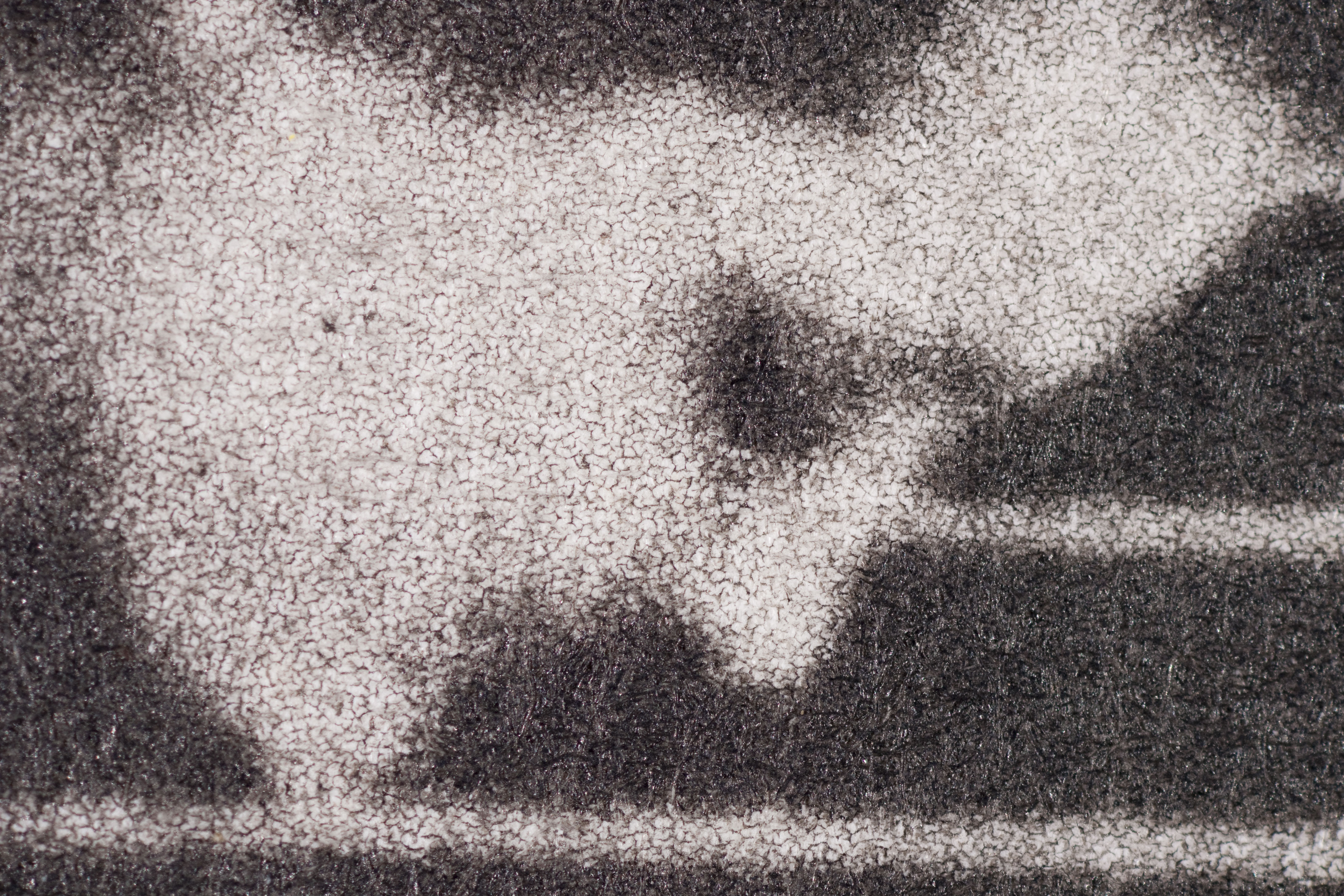
Reticulation at 30x magnification.
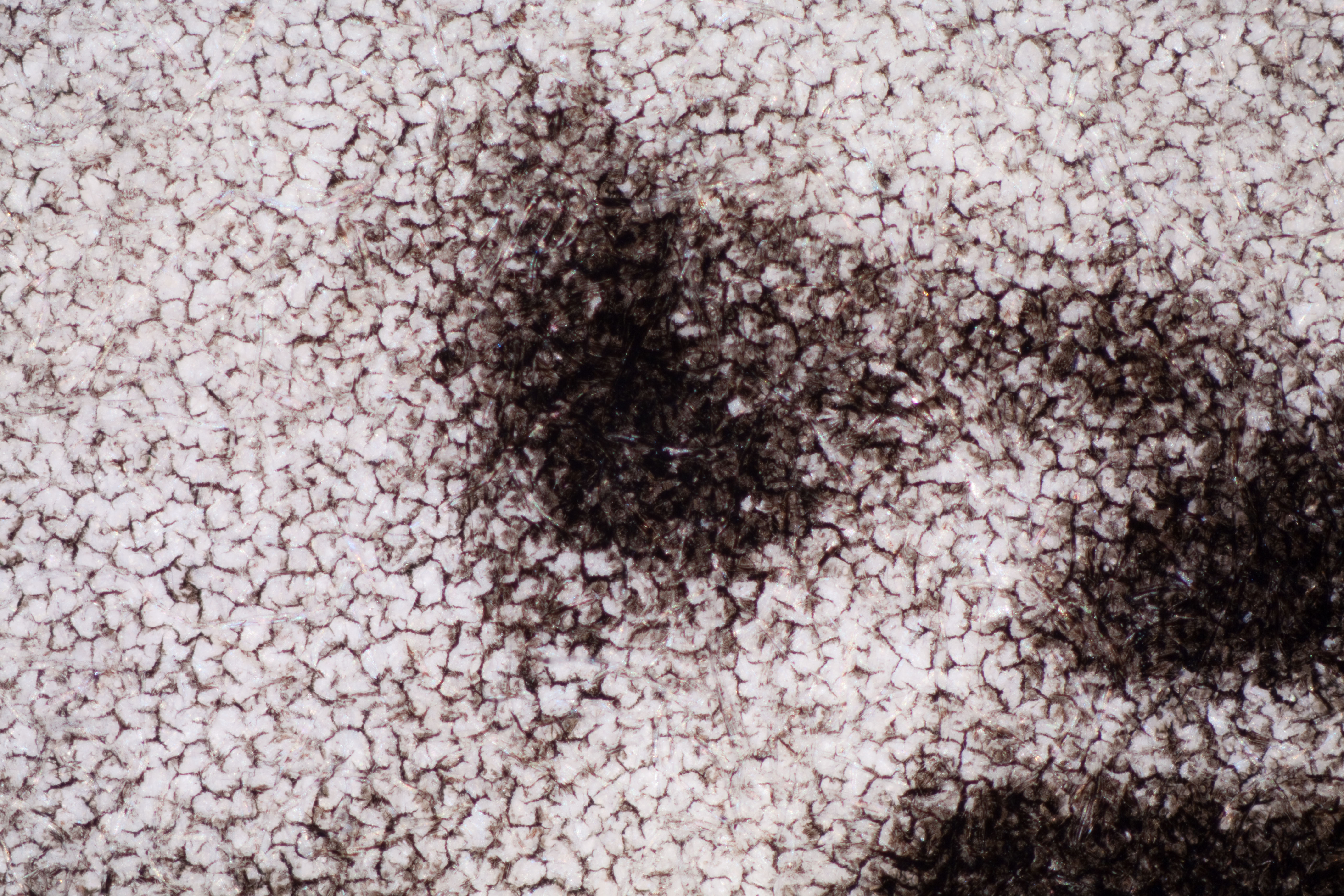
Reticulation at 50x magnification.
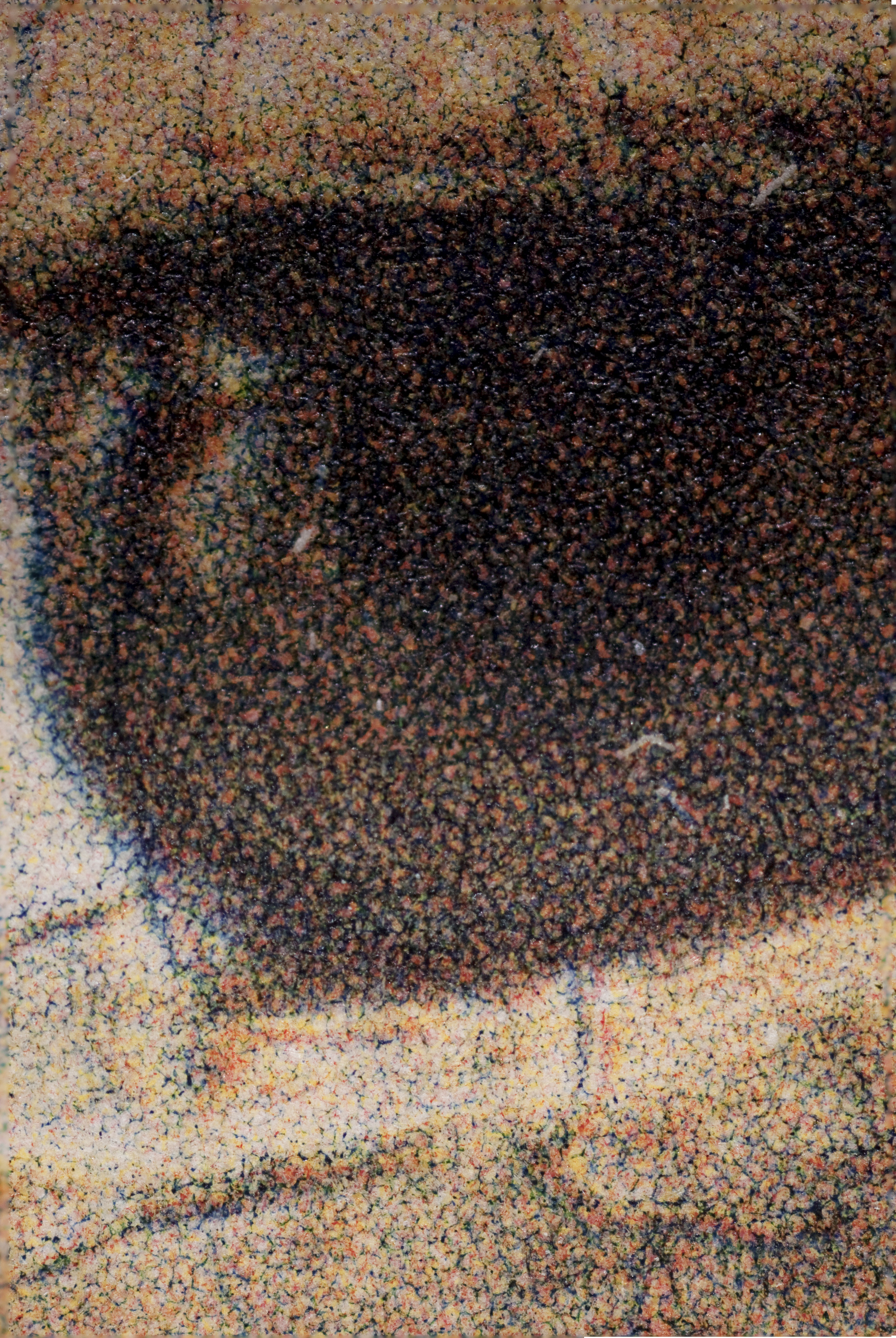
Reticulation in three-color collotype (30x magnification).
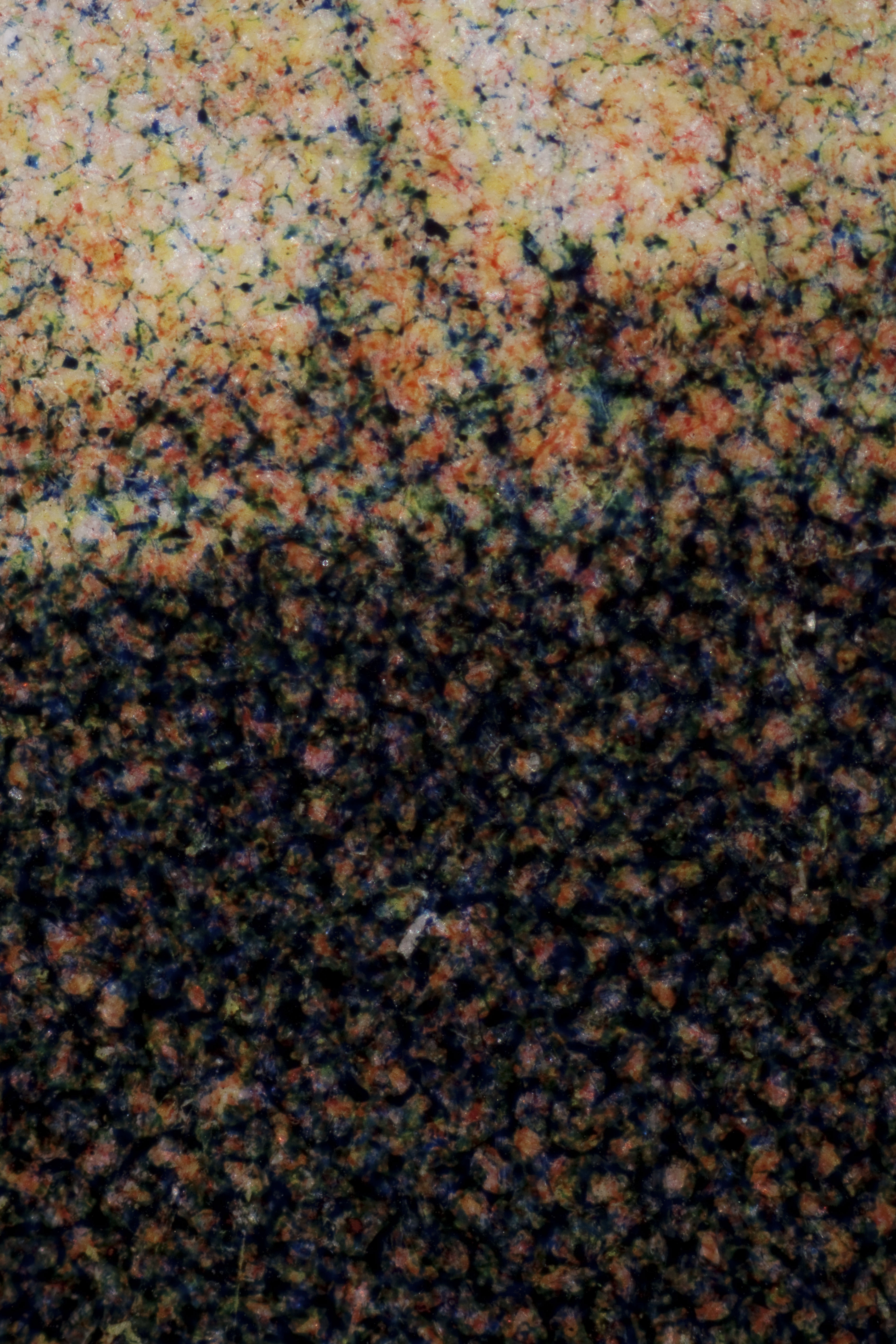
Reticulation in three-color collotype; notice the misregistration of color (50x magnification).
Layer Structure
Collotypes may have a one, two, or three layer support. The print may consist of a paper support with or without a baryta. It may also have a surface coating layer to mimic photographic emulsion. Prints may also be uncoated, consisting only of ink on paper.
Collotypes may have a one, two, or three layer support. The print may consist of a paper support with or without a baryta. It may also have a surface coating layer to mimic photographic emulsion. Prints may also be uncoated, consisting only of ink on paper.
What to look for: Damaged corners and edges may reveal a second and third layer; clearly visible paper fibers indicates a single layer structure, slightly visible paper fibers with a coating indicates a two layer structure, and no visible paper fibers indicates a three layer structure and the presence of a baryta layer.
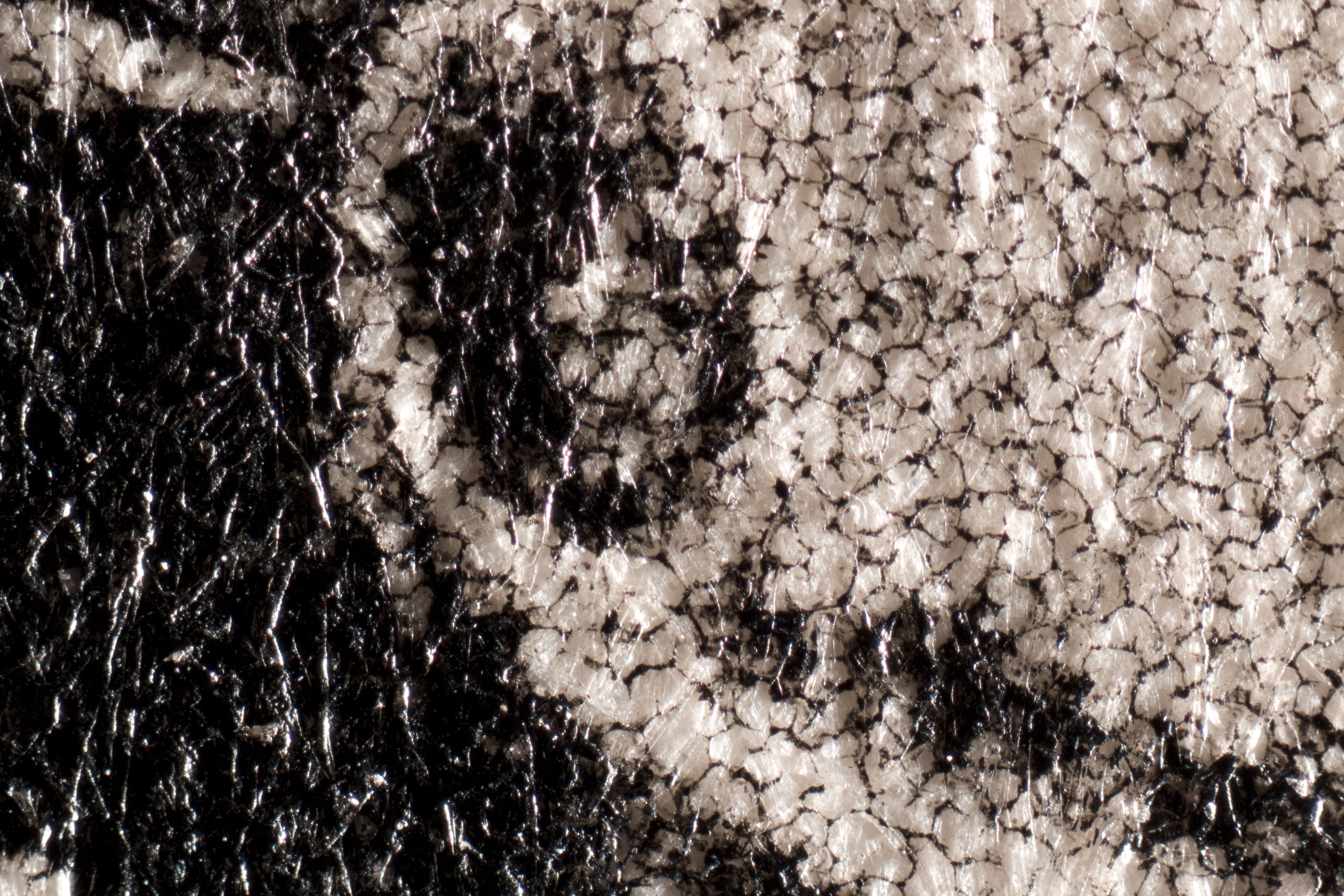
Paper fibers visible in uncoated print (50x magnification, raking light).
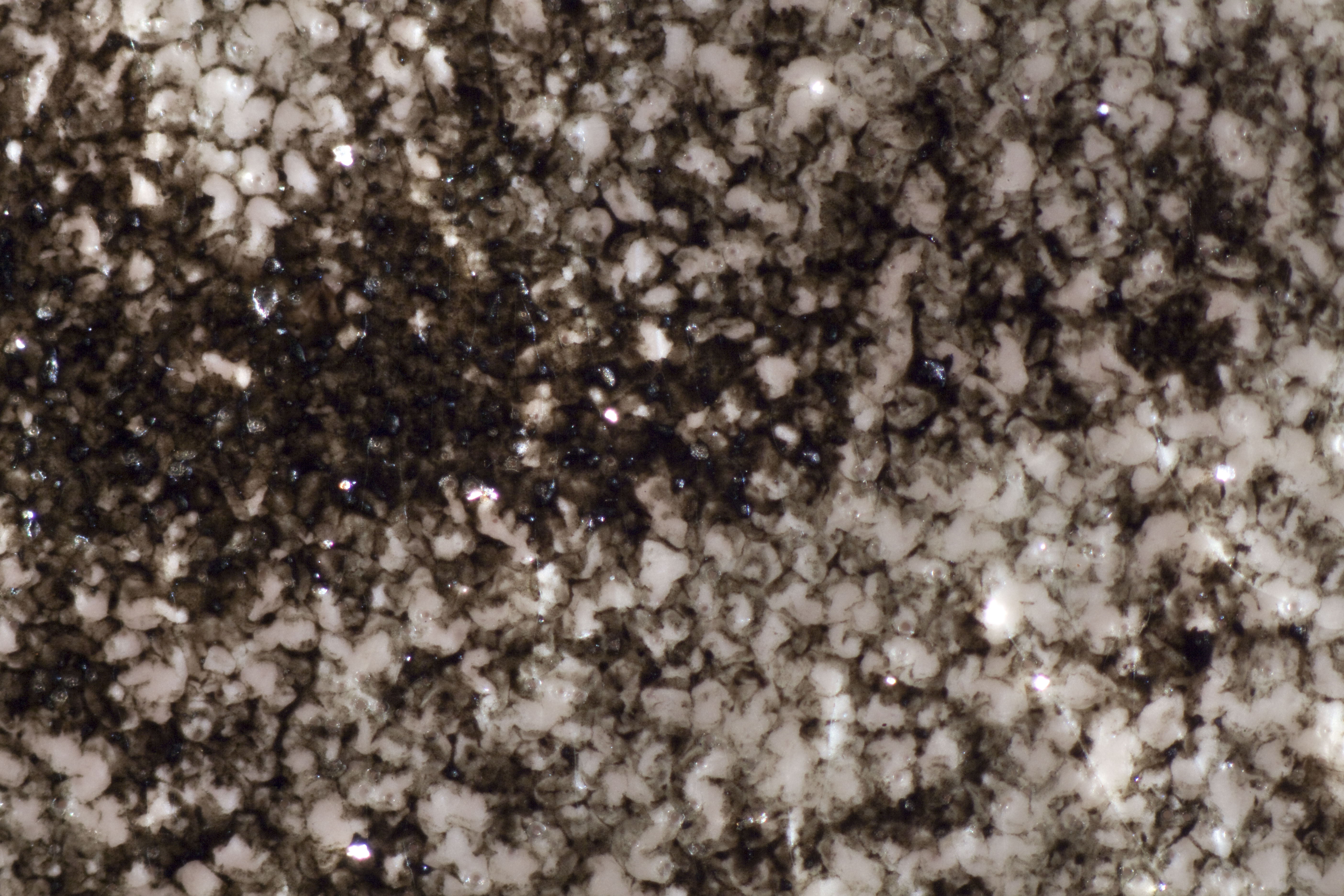
Paper fibers obscured in print with baryta-like layer and top coat (50x magnification, raking light).
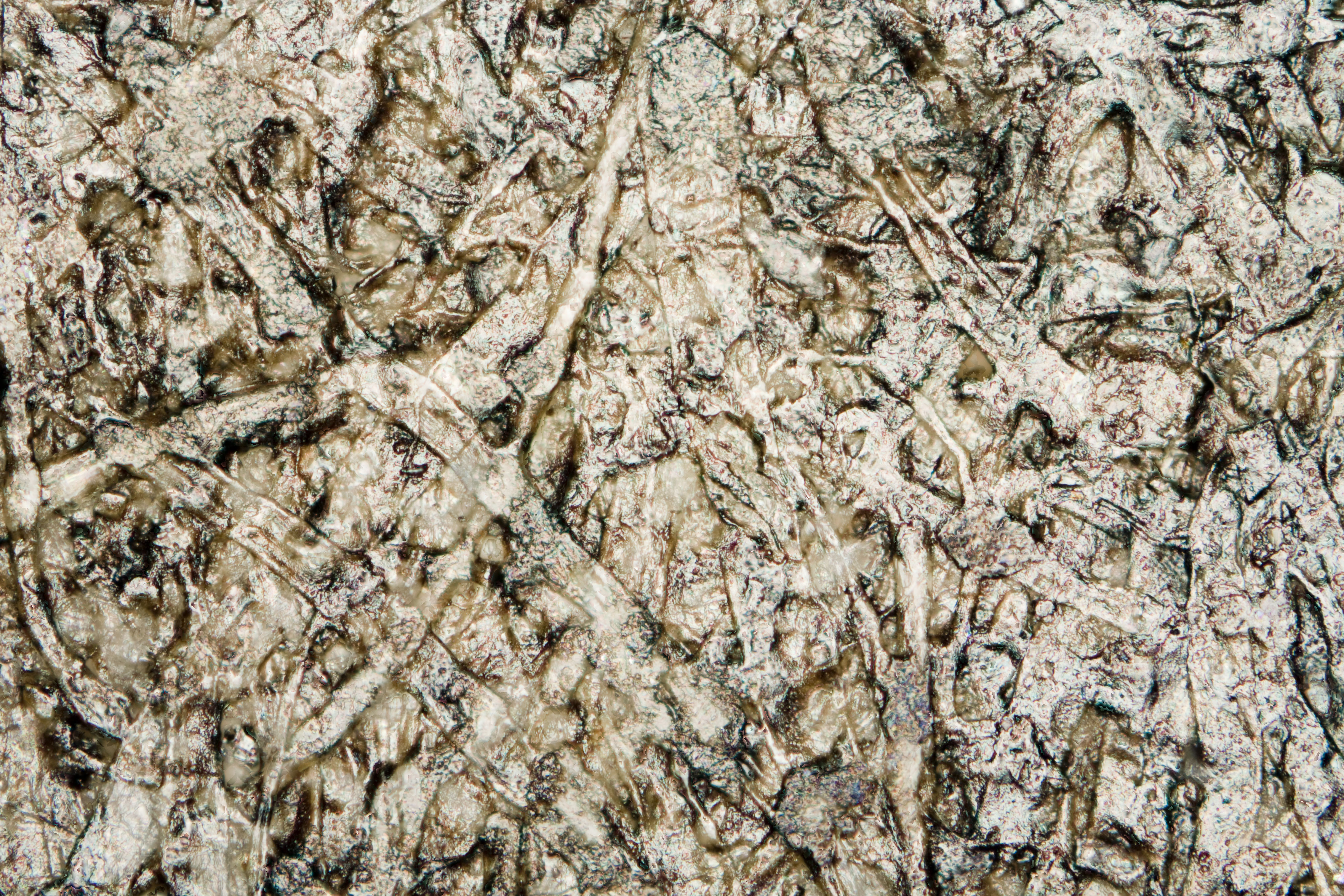
Ink and paper fibers at 200x magnification, axial light.
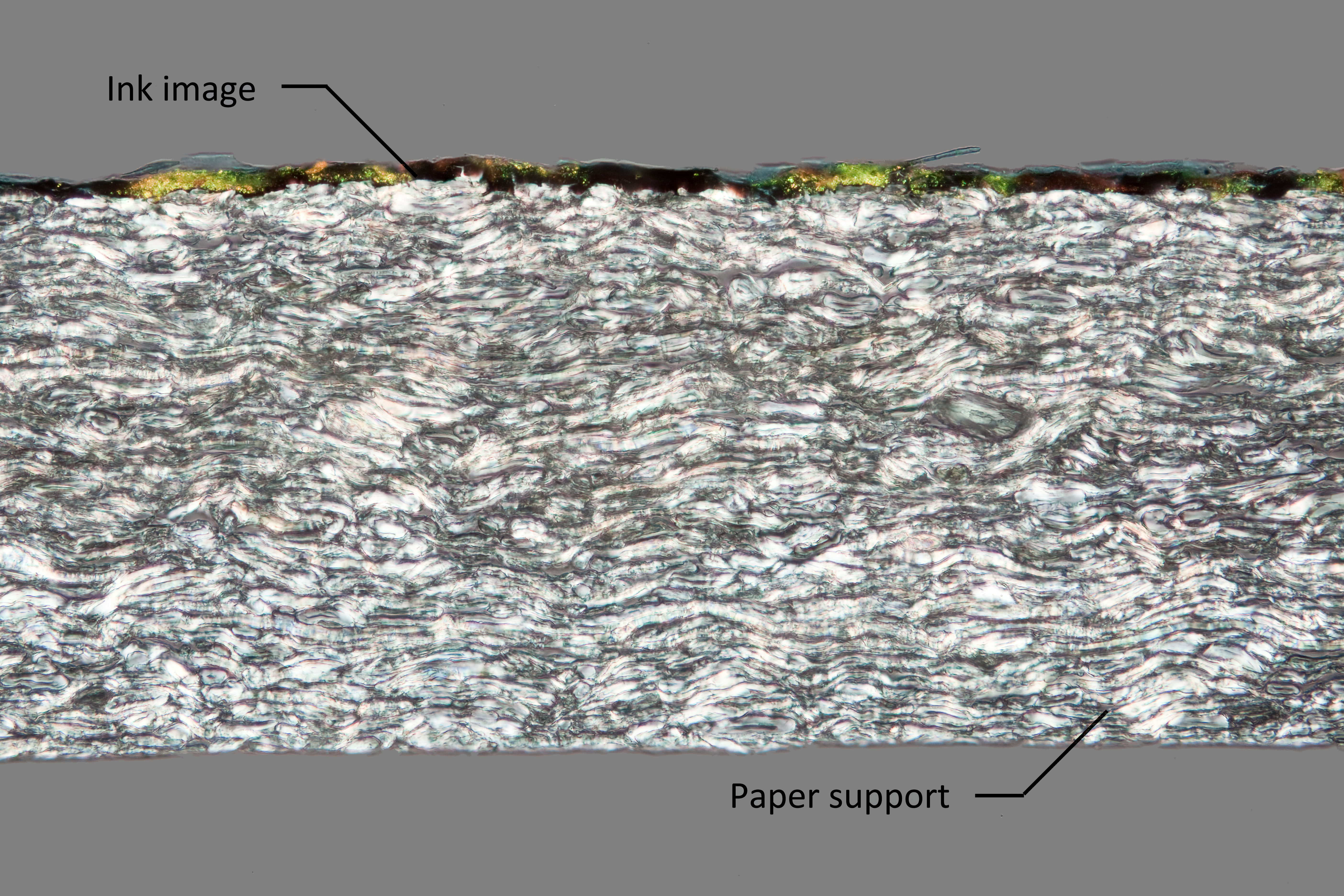
Collotypes at their most basic consist of ink on paper.